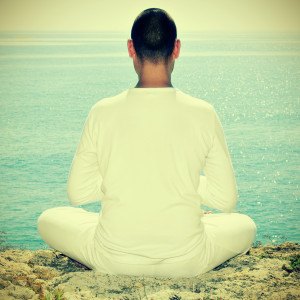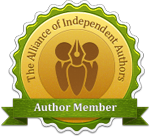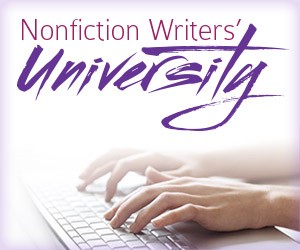
Finding stillness in our busy world is crucial not only for our ability to live in such a world, physically, and neurologically, but also for our inner landscape. In stillness we are able to reconnect with our centre, our true, authentic self. To silence the endless clamour of our planet of bleeps and busyness, and disconnect from the demands of a busy life or even a busy mind.
When feeling stressed out, everything is more difficult. When feeling overwhelmed, our entire being is affected by the rush. Sometimes overwhelm brings everything to a halt, and it’s hard to know where to begin or what to prioritise. Other times, we may struggle to keep up, only to then find we then have less time for our deeper needs, for presence, stillness, often our most treasured creative projects too.
Finding Stillness in a Busy World

Whether feeling overwhelmed through external demands or those of an inner nature, unless you untether yourself from the endless clamour of your life, from technology, and take time for you, nurturing you, and connecting with your inner stillness — no matter how briefly — feelings of stress and overwhelm can magnify, even affecting your brain’s ability to cope, with you also slipping further from living how you long to, and neglecting your own needs.
“Stress is basically a disconnection from the earth, a forgetting of the breath. Stress is an ignorant state. It believes that everything is an emergency. Nothing is that important. Just lie down,” says author Natalie Goldberg. Finding stillness when overwhelmed is more difficult as your brain reacts to that stress but you can’t force stress to leave your body, instead you allow stress to dissipate by letting your body relax, and mind calm by using tools and techniques such as those at the end of this post.
“There’s a sense of so much coming at you at once, so much to process that you just can’t deal with it all,” says freelance writer and meditation teacher Michael Taft. “Throughout history people have intuited that such puritanical devotion to perpetual busyness does not in fact translate to greater productivity and is not particularly healthy,” says Ferris Jabr in this post in the Scientific American.
Why Slowing Down is So Vital

No one likes to feel rushed or overwhelmed. It feels good to be in some kind of control, to finish projects, complete tasks and attain our goals, creative and otherwise. But whether caused by creative projects or by a demanding life, slowing down and doing less has the paradoxical effect of allowing you to do more without compromising the needs of your soul, your deeper needs.
The act of moving too swiftly, never pausing to be present, and going from one task to the next in a rush, activates the body’s stress response and has grave consequences for the brain. It also can lead to a learned state of stress, which creates the inner conditions that — perhaps ironically — make you more susceptible to further overwhelm.
“The stress hormone cortisol both sensitises the fight-or-flight alarm bell of the brain—the amygdala—and weakens a region called the hippocampus, which helps put the brakes on stress reactions. Consequently, stress today makes you more sensitive to stress tomorrow. Since the hippocampus is also critical for making memories, stress, even just feeling frustrated, irritated, or anxious makes it harder to learn new things or put your feelings in context,” says author and neuroscientist Rick Hanson.
Why Your Brain Needs Downtime

The necessities for downtime, breaks and moments of stillness affect your brain’s entire processing, as well as your reactivity and ability to cope with overwhelm. The brain requires downtime for optimum efficiency, to create memories, to create resilience too, and perhaps more essentially for writers and artists, generate its finest, most innovative, creative ideas.
“The space and quiet that idleness provides is a necessary condition for standing back from life and seeing it whole, for making unexpected connections and waiting for the wild summer lightning strikes of inspiration—it is, paradoxically, necessary to getting any work done,” wrote essayist Tim Kreider in The New York Times.
Scientists at the University of California found that rat’s brains show new patterns of activity during a new experience but it’s only when taking a break do they process this information and create memory. If the brain is constantly stimulated, you prevent this learning process. “Almost certainly, downtime lets the brain go over experiences it’s had, solidify them and turn them into permanent long-term memories,” says Loren Frank at the university.
Even though people feel entertained, even relaxed, as they multitask or pass each free moment looking at their smart phones, their brains are missing out on valuable processing and recovery time. “People think they’re refreshing themselves, but they’re fatiguing themselves,” said Marc Berman, neuroscientist at the University of Michigan.
Let Go of the Pressure to Produce

Be aware of any internal pressure to keep going and get more done, especially when you know, in your heart, that you need time away from the screen or your work; time to simply be present. As a writer and artist with severe pain condition but a creative appetite as grand as a healthy soul’s, this is a lesson I’m forever in a state of learning. Despite the consequences of overdoing it being so grave, the desire to ‘keep up’ with healthy writers and artists, seldom stills.
Yet it’s only when we let go of the need to do more than we comfortably can, in slowing down, that we connect with our truest self and even find the solutions we seek. In slowing down the rush, both internally and externally too, we have time to think clearly and be present so our work is also more lucid and liberated, and us grounded, and aware.
“The solutions to your problems are already in your mind, but you move so fast from idea, to thought, to feeling, to movement, to action… that somewhere between all that, you’ve missed it,” says author and creator of the fantastic Authorship Program, Stephanie Lennox. “Be still, be patient, and it will come to you.”
The Collective Rush

If others can manage to do so much with ease but your to-do list’s still teeming with tasks long after sundown, it can feel as if you’re failing but everyone is speeding up to keep up with all the others who have speeded up. “Busyness serves as a kind of existential reassurance, a hedge against emptiness; obviously your life cannot possibly be silly or trivial or meaningless if you are so busy, completely booked, in demand every hour of the day,” says Tim Kreider in The New York Times.
“It’s not as if any of us wants to live like this, any more than any one person wants to be part of a traffic jam or stadium trampling or the hierarchy of cruelty in high school — it’s something we collectively force one another to do.” A state of keeping busy can become its own addiction — especially if we’ve been feed the message that unless we’re busy, were lazy.
Give Yourself Permission
With people cramming every inch of their days with far too much to reasonably complete, or never stopping for breaks it naturally leads to overwhelm, feeling stressed, even inadequate. Give yourself permission to slow down, to say no to things that leave you with no time for you or do not resonate with your soul. Ignore the ceaseless calls to action and be still. Be mindful. Be present.
“Imagine for a moment that you are sitting comfortably somewhere in your old age and looking back on your life and reflecting. Do you think you are going to wish you had spent more time on the job or doing housework? Or wish you had spent more time relaxing, hanging out with friends, and looking at the stars?” Says author and neuroscientist, Rick Hanson.
Unless you are present, time slips through the hourglass at an even faster rate. It’s as if in not noticing the moment and all it contains, we miss it. The brain has no time to form the memory. It’s in the moments we linger and pay attention, especially to the good in the moment, that we lay new neural circuitry for further positive experience and memory, we also guard against habitual responses to stress. “Soak in the ease and well-being that come from slowing dow. It’s your life, no one else’s. Slow down and enjoy it,” says Rich Hanson.
Listen to Your Internal Compass

Instead of trying to maintain the pace dictated by our productivity culture, listen to your own needs and live at the pace that suits those needs. Unless you are true to yourself, you will always feel off-centre and vulnerable to the collective rush. “You already have your own inner guidance system which came built-in to your personality. The tough thing is learning how to listen to it really, really well. And ignoring those who would have you replace your own inner guidance system with theirs,” says author and writing coach, Lauren Sapala.
“To stay true to your own road, you have follow every twist and turn in the path that has been marked out just for you. It might be a long strange trip before you get where you need to go. But there’s an easy way to tell when you’re staying true to yourself and you’re on your own road. You feel good. You feel hopeful and excited about your writing, and more at peace than at war with yourself. When you are following someone else’s GPS and it’s not working for you, you feel the opposite.”
Take More Breaks

Taking breaks isn’t just good for your mind and body but your creativity too. I love the Pomodoro technique, which gives you 25-minute timed sessions, then a 5-minute break at the end. It takes advantage of your natural ability for sustained focus in the optimum way, with the breaks also at the ideal length to pepper your day with calm.
There’s power in slowing down, and pausing for moments of stillness to reconnect with your inner landscape, helping you complete tasks with more ease. Vow to yourself now that you’ll take more breaks. For you, for your creative offerings, for your body, mind, and spirit, your connection with others, even for your brain given the consequence of not doing so hampers far more than your ability to complete tasks.
“Tell yourself that you have worked hard and deserve a little rest; that it’s important for your health; that your productivity will actually increase with more breaks,” advises Rick Hanson. One way to optimise these little breaks is to do yoga asanas, a swift two-minute meditation, chi kung, tai chi, or simply diaphragmatic breathing or pranayama.
Presence, Moments and Micro-Breaks

If you cannot stop for long, take lots of micro-breaks. Even if you only pause for the briefest of moments but regularly, the accumulating effects help reduce overwhelm and susceptibility to stress. “Many times a day, step out of the stream of doingness for at least a few seconds: close your eyes for a moment; take a couple of deep breaths; shift your visual focus to the farthest point you can see; repeat a saying or prayer; stand up and move about,” says Rick Hanson.
There’s so much magic missed in living too swiftly, what author Tom Robbins called “the ecstasy of the present moment”. The consequence is we feel neither nourished or fulfilled but overwhelmed and in a state of rushing to keep up. Michael Taft agrees and also advocates deliberate mental breaks during ‘all the in-between moments’ during the day.
As well as being more diligent about our downtime and relaxation. “Getting out into nature on the weekends, meditating, putting away our computers now and then—a lot of it is stuff we already know we should probably do but we have to be a lot more diligent about it. Because it really does matter.”
Stop.
Take a deep breath
Soften and Let Go
Be aware of how you are holding yourself.
Breath deeply, slowly, evenly. Let your body relax.
Connect with your inner stillness and spend a few moments simply being aware of your breath.
Be present with the present, pause in awareness, to notice the good, the things you are grateful for, things you love, the miracle of the moment. Our society’s habit of focusing exclusively on the externals, on the wants and needs of the future, fears too, both real and illusionary, through a rapid stream of information overload, means we live blindly, in ignorance of the most incredible miracle of all, existence itself.
Just as our creativity ebbs and flows, so too do our feelings about that creativity. When for whatever reason we get a little behind or do too much, overwhelm can force us to exceed our own limits, deplete our chi and internal equilibrium and most ironically of all, get far less done. But to condense this hearty brew into a single cup of steaming cup of broth, the benefits of slowing down, pausing in aware stillness, and giving yourself downtime and peace, are not only extensive but essential.
Simple Ways to Slow Down [& Avoid Overwhelm]

When the phone rings, imagine that it is a temple bell reminding you to breathe and slow down. (This suggestion is from Vietnamese monk, Thich Nhat Hanh).
Finish each task before moving onto the next
Also ensure that any unrelated books in your workspace are put away, and other programs and websites, even browser tabs that are not related to the current task closed. To optimise your brain and efficiency, and banish feelings of overwhelm, always work on a single task at a time.
Regularly throughout your day, stop. Take a long, luxurious breath. Be present.
Spend as much time as you can in nature
Disengaging yourself from a busy routine to spend time in nature can help ground and centre you, calm you, reconnect you with the inherent stillness within. The delicate balance between your body, mind, and spirit can be so easily disrupted by a busy life. No matter how tethered you feel to the demands of your life, being in nature is healing for your entire being.
Have a daily relaxation practice
Ensuring you have a daily relaxation practice, no matter how humble, teaches the mind, body and especially the brain through the process of neuroplasticity, to be less reactionary, to rest with a sense of safety instead of anxiety, stress or overwhelm. Whether you choose meditation, yoga asana practice to calm both body and mind, or a breathing exercise that strengthens your chi and awareness — they all bring you back to a natural sense of well-being and calm equilibrium.
Listen. Let others finish talking before talking. Listen instead of waiting to speak.
See the good in the moment
If you are on hold on the phone, rest your eyes on something beautiful or interesting. Looking at images of nature for instance, has been shown to both relax you and give a joyful boost of creativity too. If you’re stuck in a queue, use that time to do a few calming breaths or if you practice it, chi kung is a wonderful way to pass time and still do something good for body, mind and soul when waiting.
Unplug from technology
If only for a few minutes, have time out from technology. Turn off your phone, or at least the notifications, and take a break away from technology.
Do your tasks mindfully, more slowly.

When making a pot of tea, move slowly in awareness; when drinking it, move the cup slowly to your lips. Eat mindfully and slowly, savour each texture and taste. This exercise in mindfulness naturally makes you aware of how swift we are to distract ourselves and how quickly we move from one activity to the next.
Get it onto paper, and break it down.
“Sometimes, we carry around the so much metaphysical weight in the form of undone tasks that it’s hard to get ANYTHING done. All our energy is wrapped up in these things we feel we need to do,” says author and writing coach, Cheryl Reif. When overwhelmed this simple but powerful tool can be a sanity-saver. Get everything out of your head, and onto paper. Then divide things into manageable tasks, then do a single task. One email, one phone call, one scene, even one sentence.
Have a Daily Yoga Asana Practice
Yoga can help you have healthier stress responses. A Newcastle University study found that six weeks of hatha yoga increased the activation of the parasympathetic nervous system (the calming side). The yoga brought about a state of autonomic balance and flexibility — which brings a greater resilience to stress and overwhelm. Offering more evidence that having a yoga practice can prepare for and help you cope with stress, not just recover from that stress.
Practice Chi Kung (Qigong)

“Qigong/Chi Kung is an extraordinary tool for reducing the harmful effects of stress,” says Kenneth Cohen, qigong master and author of The Way of Qigong. “The three pillars of qigong practice are body, breath, and mind. If your body is relaxed your breathing will slow down. When your breath is slow, you feel more centered, more calm, and more in touch with yourself.” This video with Kris Deva North from the London Healing Tao Centre, gives a series of little lessons for those new to the practice.
Take a mental holiday
Visualisation is a wonderful tool for a moment of rejuvenating escape. All you need do is close your eyes and imagine yourself somewhere that soothes you. A lush rainforest, a silent forest, beach or mountain lake. Truly see yourself there, feel the grass or sand between your toes, the warmth of the sun on your skin and breath in the relaxation and calm. Even five minutes of this can restore your equilibrium and ease overwhelm too.
IF YOU ENJOYED THIS POST, FEEL FREE TO SHARE THE LOVE ♥
P.S. Sign-up to my newsletter, The Creative Om, should the mood take you, Namaste ♥
Each Writer Has a Unique GPS: Are You Using Yours? | Lauren Sapala
What’s Weighing You Down | Cheryl Reif Writes
Walking the Line Between Creating and Producing as an Entrepreneur – Creative Katrina
For The Creators – Why your creative work needs more gratitude and less criticism
10 Creative Benefits of Spending Time in Nature: Awakening Your Creativity through Nature
Your Brain on Computers – Digital Devices Deprive Brain of Needed Downtime – NYTimes.com





Great article. Awesome concept that everyone should take note of. This actually coincides with research one of my professors put out on how wellbeing is actually a skill people can teach themselves.
http://bus.wisc.edu/knowledge-expertise/faculty-research/forward-thinking-blog/2015/01/29/how-to-cultivate-well-being-in-a-busy-world
Thank you Jess, and also for the link. I loved this: “Our brains and minds are plastic. So often people leave their minds and brains to whatever is happening—a rudderless sailboat. We can intentionally insert a rudder and guide our minds in a particular way. Once you recognize that possibility, it opens so many doors. Take a few minutes each day and intentionally cultivate a particular direction of your mind, use simple mindful breathing exercises. Pay attention in a mindful way to your breathing, to your body, to sounds that are present in your environment. Pay close attention to what you’re eating, how you’re eating and even when you walk to your next appointment. Take two or three mindful breaths before entering a difficult meeting or conversation.” It’s so crucial on every level. I find neuroscience, especially neuroplasticity fascinating. Thanks for sharing it. So pleased you enjoyed my offering too. Wishing you a joyful weekend.